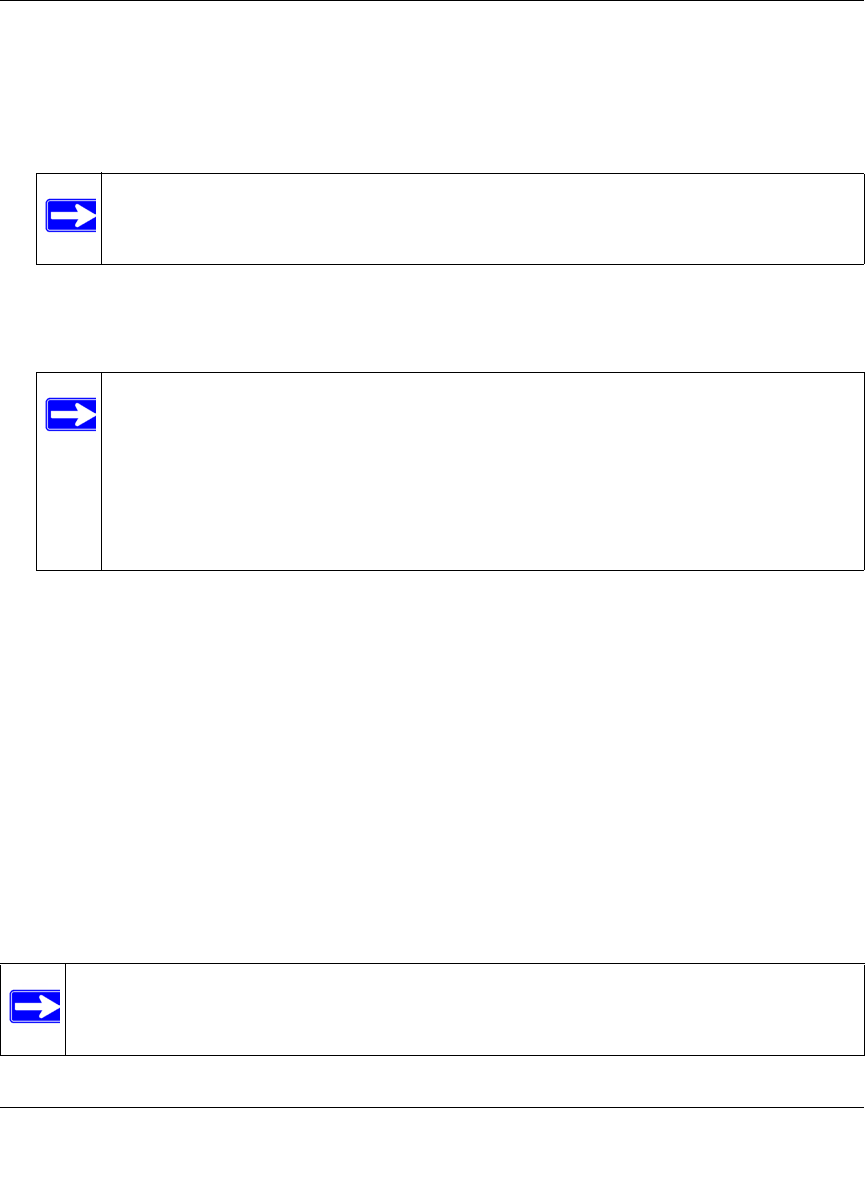
ProSafe Dual Band Wireless-N Access Point WNDAP350 Reference Manual
Basic Installation and Configuration 2-11
v1.1, November 2009
1. Disconnect the WNDAP350 and position it where it will be deployed. The best location is
elevated, such as wall mounted or on the top of a cubicle, at the center of your wireless
coverage area, and within line of sight of all the mobile devices.
2. Lift the antennae on either side so that they are vertical.
3. Connect an Ethernet cable from your WNDAP350 wirelss access point to a LAN port on your
router, switch, or hub.
4. Connect the power adapter to the wireless access point and plug the power adapter in to a
power outlet. The PWR, LAN, and Wireless LAN lights and should light up.
Verifying Wireless Connectivity
Using a computer with an 802.11b/bg/ng or 802.11a/na wireless adapter with the correct wireless
settings needed to connect to the WNDAP350 (SSID, WEP/WPA, MAC ACL, etc.), verify
connectivity by using a browser such as Mozilla Firefox or Internet Explorer to browse the
Internet, or check for file and printer access on your network.
The default SSID for the 802.11b/bg/ng wireless mode is NETGEAR_11g; the default SSID for
the 802.11a/na mode is NETGEAR_11a. The SSID of any wireless access adapters must match the
SSID configured in the ProSafe Dual Band Wireless-N Access Point WNDAP350. If they do not
match, no wireless connection will be made.
Note: Refer to the antenna positioning and wireless mode configuration information
in the Advanced Configuration chapter of the Reference Manual.
Note: By default, WNDAP350 is set with the DHCP client disabled. If your network
uses dynamic IP addresses, you must change this setting. To connect to the
WNDAP350 after the DHCP server on your network assigns it a new IP
address, enter the wireless access point name into your Web browser. The
default wireless access point name is netgearxxxxxx, where xxxxxx represents
the last 6 bytes of the MAC address. The default name is printed on the bottom
label of the WNDAP350.
Note: If you are unable to connect, see Chapter 5, “Troubleshooting and Debugging.”
